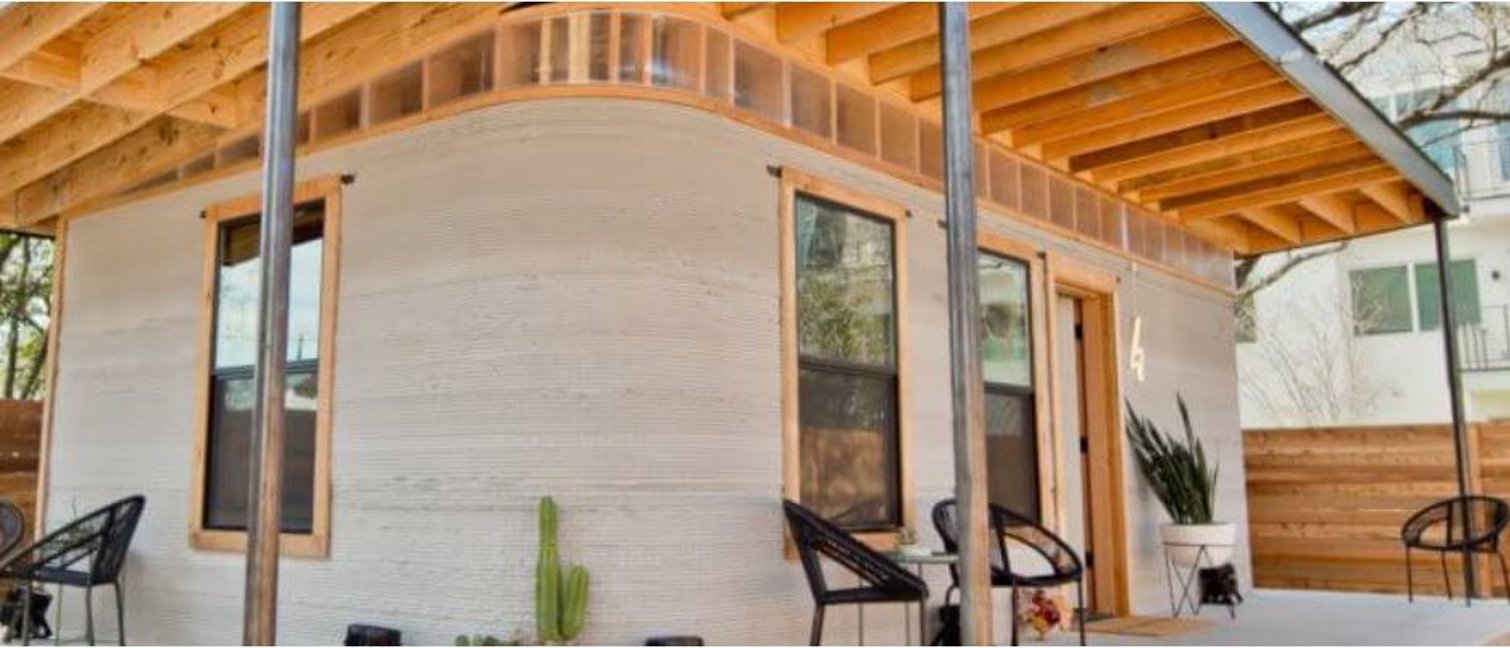
To tackle the problem with a huge number of people living without adequate shelter, this pioneering non-profit initiative uses 3D-printed houses to end global homelessness in poor areas.

The knowledge and experience are shared with other nonprofit organizations and governments, so that collectively, it is possible to build faster, better, and stronger. Apart from a project in El Salvador (55 homes) there are two projects in Mexico. A house is printed in approximately 24 hours and it is made from a local material called Lavacrete. Each house is 55-75 square meter and costs less than $ 4,000. The American start-up (Icon) has developed a mobile printer with which they can print one-story houses. The printer will generate "near zero" waste and it will be able to work under harsh conditions with limited access to water, electricity and labor.
A strong vision: "We are all in this together."
New Story Charity, ICON and Fuseproject - then a local partner in the country is involved.
Donations and crowdfunding.
To increase the possibilities for providing homes and shelters for homeless people. "A home impacts every aspect of a family’s life: security, health, education, finances, and beyond." To address the complexity of the problem, New Story works towards creating holistic solutions.
This case has a strong foundation in the vision for combatting homelessness globally and together: "We are all in this together." Sharing knowledge with others is one of their corner stones: “inclusive design - we developed a process to make it simple and repeatable - not only for ourselves, but for home builders everywhere”. Co-creation is another: "This process, called Lean Participatory Design, invites community members of all ages to give actionable feedback on the construction of their homes and community."
Tech trends: Sharing economy, 3D-printing, Automization/Robotics, Prototyping
Societal trends: Transparency, Urbanization, Global networking, Neo Collectivism, Eco-system network, Distorted allocation of resources.
This case can be linked to several SDGs. No. 3 - Good health and well-being - as a home is considered the foundation for people’s well-being, no. 9 - Industry, innovation and infrastructure - due to the focus on 3D technology and innovating building methods in general, no 10 - Reduced inequalities - as reducing homelessness is an important step in the right direction, no. 11 - Sustainable cities and communities - as it aims for an inclusive and sustainable urbanisation, and finally no. 12 - Responsible consumption and production - since the materials and production is producing near zero waste.
No interview - online references only:
https://newstorycharity.org/3d-community/
https://www.nyteknik.se/bygg/de-3d-printar-betonghus-for-fattiga-i-el-salvador-6904783